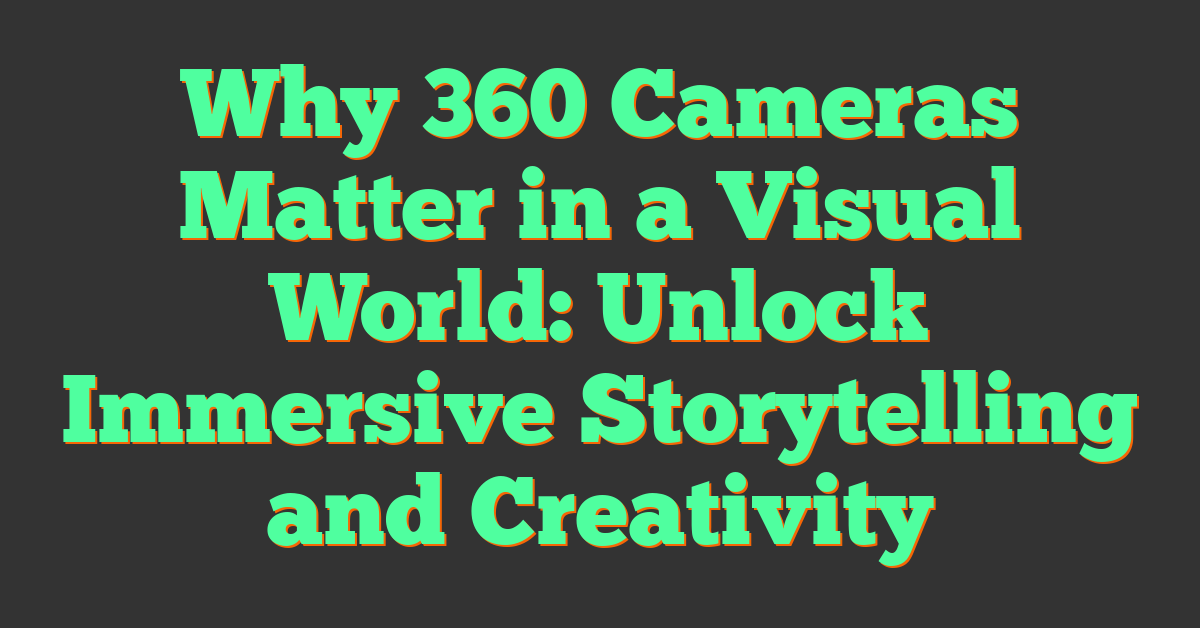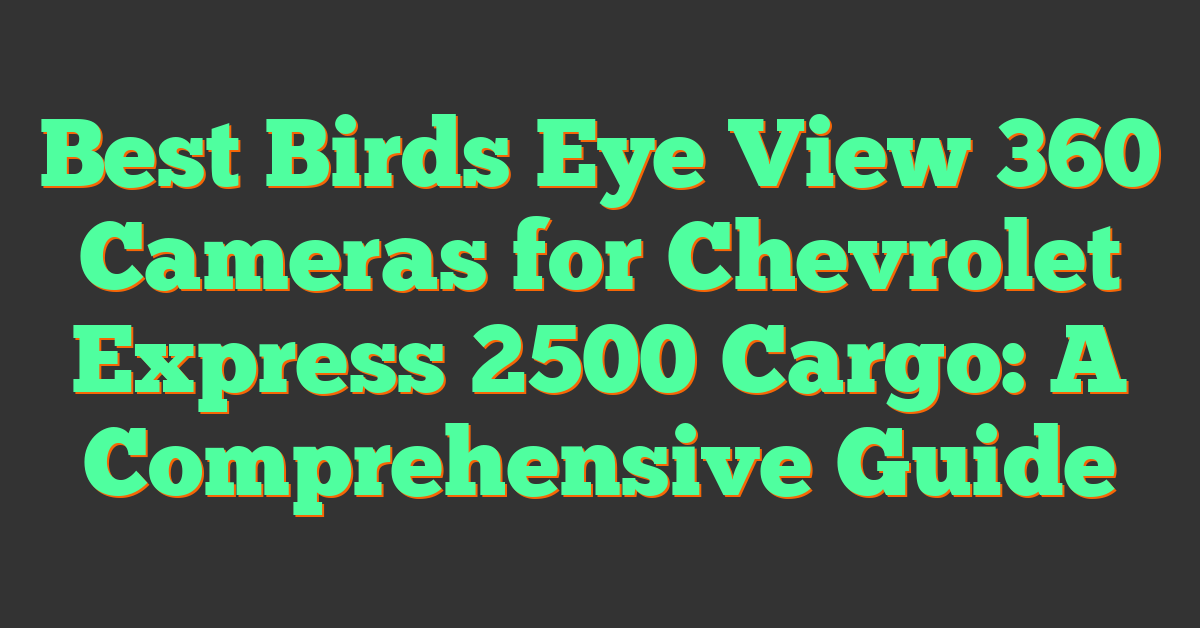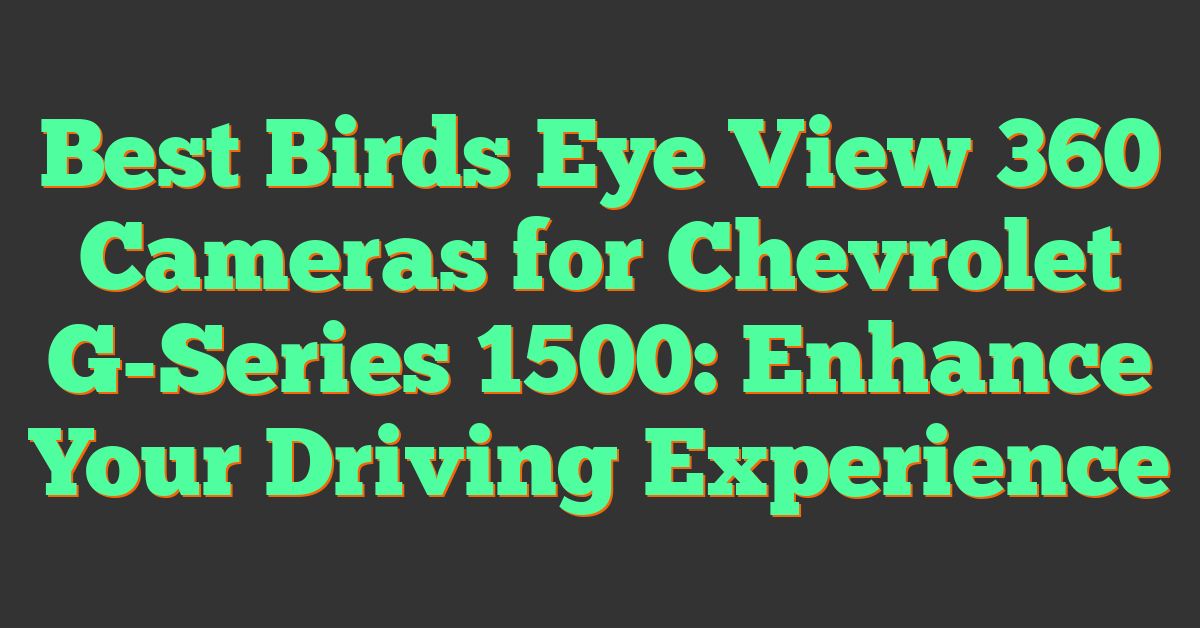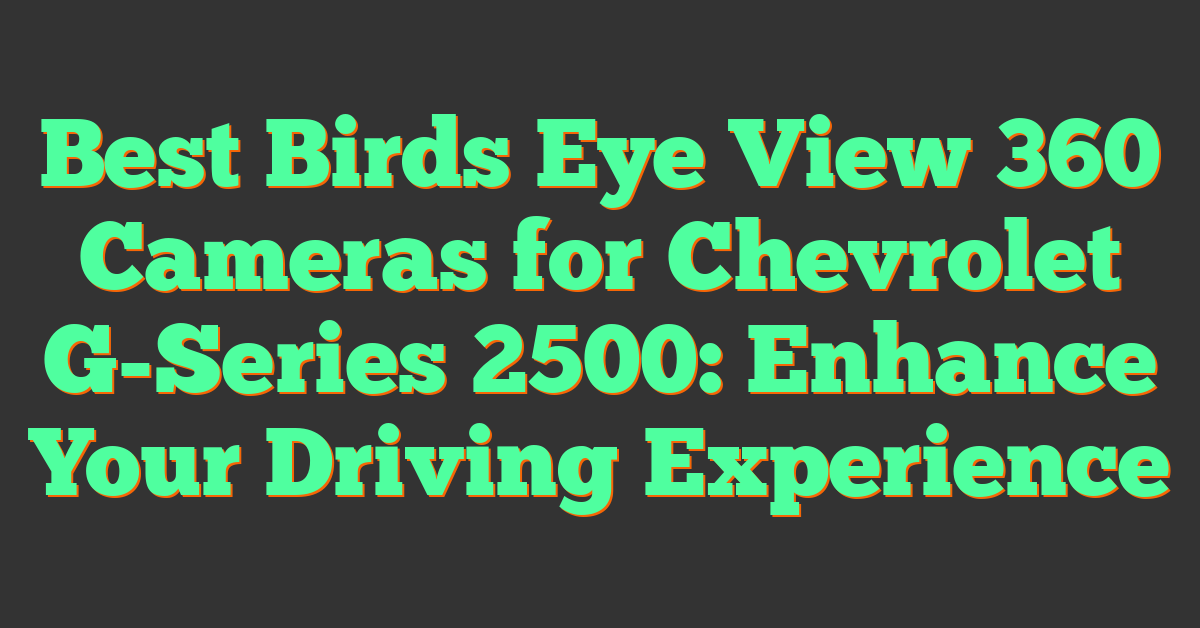Key Takeaways
- 360 cameras revolutionize visual storytelling by capturing immersive, spherical content, offering perspectives traditional cameras cannot match.
- These devices are widely used across industries like travel, real estate, and entertainment to create engaging experiences, such as virtual tours or interactive videos.
- 360 cameras enhance creativity with features like Tiny Planet effects, dynamic reframing, and VR compatibility, boosting audience interaction, particularly on social media.
- While they offer exciting possibilities, challenges like high costs, a technical learning curve, and limited low-light performance may deter some users.
- Despite limitations, 360 cameras continue to reshape how we capture, share, and interact with visual content in a growing digital landscape.
In a world where visuals dominate how we connect, share, and experience, 360 cameras have become game-changers. They don’t just capture moments—they immerse you in them, offering a perspective traditional cameras simply can’t match. From breathtaking landscapes to dynamic action shots, these cameras let you see and relive every angle.
As our digital lives lean more toward interactive and immersive content, the demand for 360-degree visuals is skyrocketing. Whether you’re a content creator, a traveler, or just someone who loves storytelling, these cameras open up endless possibilities. Let’s dive into why they’re reshaping the way we see and share the world.
Understanding 360 Cameras
360 cameras are game-changers for anyone passionate about capturing immersive visuals. They allow photographers and videographers to create interactive content that places viewers directly in the scene.
What Are 360 Cameras?
360 cameras are devices designed to capture a full spherical image or video of the surrounding environment. Unlike traditional cameras, these devices record in every direction simultaneously, eliminating the need to frame a shot. They often combine footage from dual wide-angle lenses, positioned back to back, to produce seamless 360-degree content.
Popular models include Insta360 ONE X3 for its portability and GoPro MAX for action shots. Many 360 cameras also offer high-resolution video, typically in 5.7K or above, and advanced stabilization technology for smooth footage.
How Do 360 Cameras Work?
360 cameras use multiple lenses, often two ultra-wide fisheye lenses, to capture overlapping fields of view. After recording, the camera software automatically stitches the overlapping footage into a single spherical image or video.
The stitching process corrects distortions and ensures a seamless transition between angles. For real-time output, such as live streaming, the device employs rapid stitching algorithms. Some models integrate gyroscopic sensors to improve stabilization, which is particularly helpful for outdoor adventures or action shots.
These cameras can export files in standard formats like MP4 and JPG, compatible with most editing software. Advanced features like HDR and time-lapse are increasingly common, enhancing dynamic content creation.
The Impact Of 360 Cameras In a Visual World
360 cameras have redefined how we capture and experience content by making visuals immersive and interactive. These devices bring a unique perspective that enhances storytelling, social media content, and advertising.
Enhancing Immersive Storytelling
« Discover the Fascinating History of Stitching in 360 Photography and Its Revolutionary Evolution
The Science Behind 360-Degree Photography: How It Works and Why It’s Transforming Visual Media »
360 cameras allow creators to tell stories in a completely immersive way, unlike traditional cameras. By capturing every angle of a scene, they place viewers directly within the moment, making them feel like part of the story. For example, when I shoot travel documentaries, I can transport my audience to that location, showing views of landscapes, bustling markets, or serene beaches in a full 360-degree sphere.
They support VR integration, enriching storytelling even further. Viewers can navigate the scene through VR headsets, experiencing it interactively rather than passively. This capability is particularly transformative for virtual tours, educational videos, and action-packed footage.
Transforming Social Media Content
360 content on platforms like Facebook and YouTube creates a striking visual difference, driving engagement and shares. These platforms now support interactive 360-degree videos, which let users navigate the scene directly on their screens. As someone who has posted interactive 360 travel clips, I’ve seen firsthand how this unique content generates curiosity and higher audience participation.
For photographic content, tools like the Tiny Planet effect make 360 photos stand out in crowded feeds. With creators relying on high-quality cameras like the GoPro MAX, these visuals can be edited seamlessly to fit the platform’s requirements. The result? Eye-catching, shareable content that leaves a lasting impression.
Revolutionizing Advertising Strategies
Brands are using 360 cameras to deliver next-level advertising experiences. With immersive 360 campaigns, potential customers can explore products, locations, or services as if they were physically there. Automotive brands, for instance, use 360 tours to showcase their car interiors, while real estate companies create virtual walkthroughs of properties.
The combination of dynamic storytelling, high-resolution 360 visuals, and VR compatibility makes these campaigns more engaging and memorable. As someone who worked on VR-ready promotions in the past, I know how crucial these elements are in captivating audiences and ultimately enhancing brand value.
Key Benefits Of Using 360 Cameras
360 cameras have revolutionized how we capture and share moments, offering a unique approach to creativity, engagement, and perspective. As someone passionate about immersive visuals, I’ve seen firsthand how these devices open doors to new possibilities in storytelling and dynamic content creation.
Expanding Creative Possibilities
360 cameras empower creators to push creative boundaries. Capturing spherical photos or videos allows me to experiment with formats like tiny planets, crystal balls, and panoramic horizons. These effects work exceptionally well for travel photography, weddings, or urban exploration, where unique viewpoints matter most.
With editing software like Adobe Premiere Pro or the Insta360 Studio, I can reframe spherical footage into standard formats while emphasizing critical moments. By changing angles post-capture, I turn a single shot into multiple compositions, reducing the risks of missing the perfect frame.
Offering Unparalleled Perspectives
Traditional cameras limit viewers to a fixed frame, but 360 cameras immerse them fully in the scene. With high-end models like the GoPro MAX offering 5.6K resolution and horizon leveling, I can create ultra-stabilized action shots that feel dynamic yet clear.
These perspectives are perfect for documenting high-energy activities like mountain biking or scuba diving. Viewers can explore every angle, enhancing the storytelling experience. Even in virtual tours, 360 imagery transforms how real estate agents, museums, or event venues showcase spaces, offering clients an authentic preview.
Enabling Better Audience Engagement
Viewers naturally interact more with 360 content. Platforms like YouTube and Facebook support immersive video formats, letting users tilt or swipe to navigate scenes. I’ve noticed these videos consistently receive higher engagement rates compared to standard uploads.
For photographers and videographers, presenting interactive content bridges the gap between creators and audiences. The ability to control the camera perspective draws viewers into the story, whether they’re exploring hidden corners of a landscape or feeling present during an event like a concert or sports game.
Industries Leveraging 360 Cameras
360 cameras are changing the way photographers and videographers approach their craft, and various industries rely on these technologies to elevate their visual content. From immersive films to virtual real estate tours, these devices enable professionals to deliver unique experiences that traditional cameras just can’t match.
Entertainment and Film Production
Entertainment and film extensively utilize 360 cameras to captivate audiences. From VR films to immersive music videos, creators use these devices to put viewers in the heart of the action. Directors can craft dynamic sequences by integrating 360 footage with traditional visuals. For example, the Oscar-winning short film “Pearl,” created using 360 technology, highlights how storytelling can adapt to these formats. Interactive scenes in action or horror genres also thrive on the audience’s ability to explore entire environments in real time.
Travel and Tourism
The travel industry embraces 360 cameras to showcase destinations. Travel videographers capture panoramic landscapes or bustling cityscapes, enabling viewers to experience these places as if they were there. Hotels and tour operators also use this technology for virtual walkthroughs. When I worked in the 360 camera industry, I collaborated with professionals shooting glaciers in Iceland and cultural sites in Cambodia; this ability to document destinations immersively has sparked a whole new era for travel media.
Real Estate and Virtual Tours
Real estate professionals use 360 cameras for virtual property tours to give buyers a more comprehensive view. These tours save time for both sellers and potential buyers while enhancing the decision-making process. Platforms like Matterport and Zillow 3D Home streamline these experiences, letting agents upload high-quality, interactive tours directly. For example, capturing luxurious interiors or showcasing architectural designs in a single video ensures clients never miss critical details. In my experience shooting demo tours, 360 content consistently leaves a strong impression on viewers.
Challenges And Limitations
Even with their versatility, 360 cameras come with challenges that can impact their usability, especially for photographers and videographers. Understanding these limitations is essential to make informed decisions when investing in this technology.
Cost And Accessibility
Pricing for 360 cameras can be prohibitive for those just entering the field. High-quality models like the Insta360 Pro 2 or Kandao Obsidian R range from $2,000 to $5,000. Even consumer-tier options like the Insta360 ONE RS 1-Inch 360 Edition hover around $800. This cost narrows accessibility, especially for enthusiasts on a budget. Additionally, purchasing accessories like memory cards, stabilization gear, and editing software increases overall expenses.
Availability varies, with top-tier models limited to specific regions or online platforms. For instance, the GoPro MAX is widely available, but some professional-grade cameras require direct purchases from manufacturers or specialized retailers. These factors can complicate the buying process for individuals without easy access to global shipping or local distributors.
Technical Learning Curve
Mastering 360 cameras involves more effort compared to traditional cameras. Efficiently operating dual-lens systems and understanding concepts like stitching, parallax effects, and calibration requires time and patience. For example, ensuring the lenses are aligned perfectly to avoid distorted stitching results is critical but not intuitive for beginners.
Editing 360 content is another challenge. Specialized software such as Adobe Premiere Pro with VR plug-ins or Insta360 Studio is often required. While these tools offer powerful functionalities, they demand significant learning time. Without prior experience, navigating features like reframing, keyframe adjustments, or exporting in spherical formats can feel daunting.
Quality Vs. Traditional Cameras
Despite many advancements, the resolution and dynamic range in 360 cameras often lag behind high-end DSLRs or mirrorless cameras. Even premium 360 cameras like the Insta360 Titan, with its 11K resolution, struggle to match the fine details and color accuracy of cameras like the Sony A7 series.
Low-light performance is another drawback. Due to smaller sensors, most 360 models underperform in dim environments compared to traditional cameras. Night shoots, concerts, or any scenario with limited lighting can result in grainy footage. Additionally, the extreme field of view sometimes causes soft focus or edge blurring, which compromises overall visual quality.
While the challenges are significant, understanding them lets us maximize what 360 cameras offer. These limitations don’t take away from their immersive capabilities but do emphasize the importance of preparation and education in using them effectively.
Conclusion
360 cameras have become invaluable tools in a world where visuals dominate how we communicate and connect. Their ability to deliver immersive, interactive content opens up creative possibilities that were once unimaginable. Whether you’re a content creator, a professional in a specialized industry, or simply someone who loves capturing unique perspectives, these cameras offer a new dimension to storytelling.
While they come with challenges like cost and a learning curve, the potential they bring to enhance engagement and creativity is undeniable. As technology continues to evolve, 360 cameras are set to play an even bigger role in shaping how we capture and share our world.















